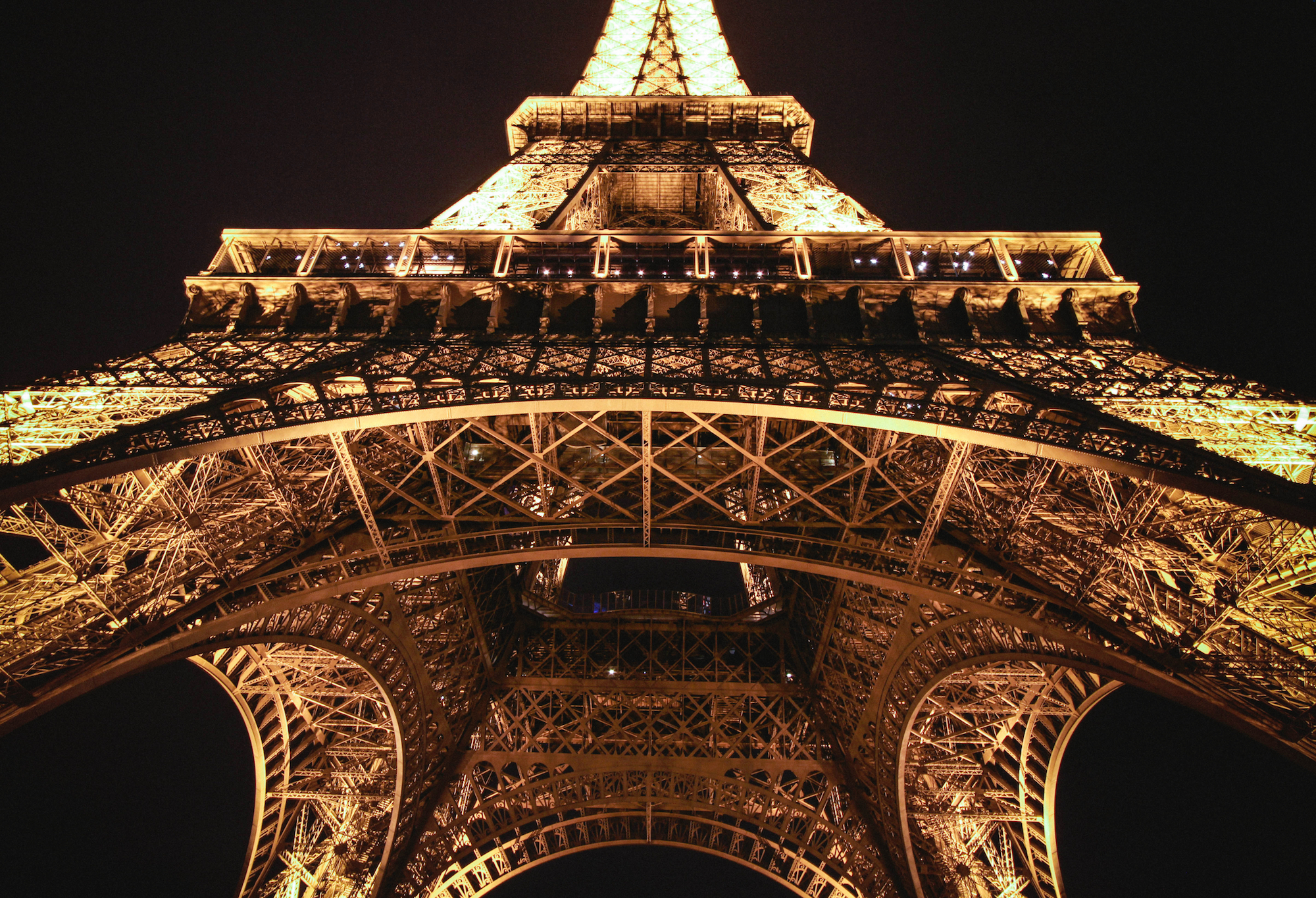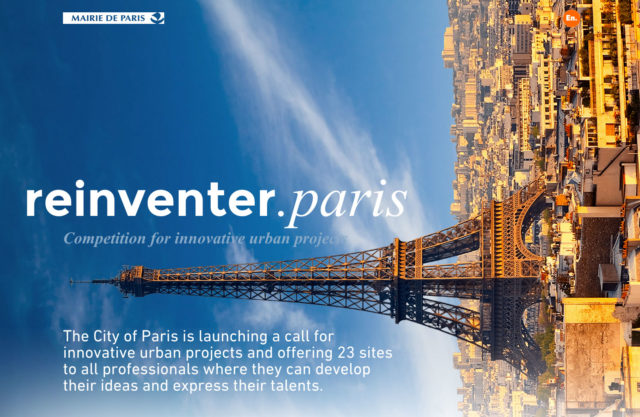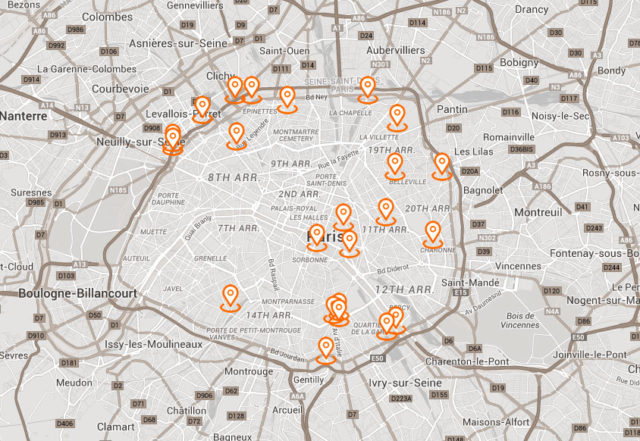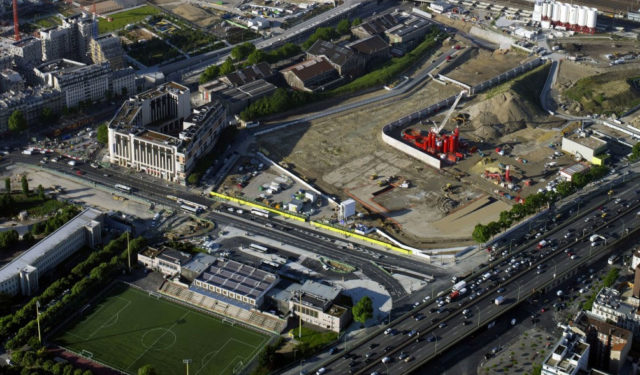
Reinventing Paris from the Bottom Up
janvier 25, 2015 — Uncategorized
When I think of the Paris of tomorrow, I think of a green city, a connected city, an ingenious city and a free city.
This is the city we are building with Réinventer Paris, the biggest call for urban projects that has ever come about on a city level. The rules of the game are simple: people come up with a building development project, which must be financed by private or public funds, but not by funds from the City. The City makes a building site available, and sells or rents it, not to the highest bidder, but to the best, most innovative project.

The initiative stems from projects we pioneered during my former position in Mayor Bertrand Delanoë’s delegation. In 2010, we launched our first ever call or innovative projects, focusing on intelligent urban furniture. It was a great success, with around 40 projects selected. We later launched other calls for projects covering diverse topics: energy, vegetation, support for dependent persons and urban metabolism. We quickly realized that the call for projects is a very efficient method of mobilizing all stakeholders around new ways of thinking about and building the city.
So, one of the first things I did in 2014, in my new role as deputy to Mayor Anne Hidalgo, was to find out if there were any disused buildings or sites, belonging to the City of Paris, which could be the launch pad for an open call for proposals. We realized that there were many sites that were not strategic for the city or in construction zones. We decided to see if we could deal with these in a different way than we had before. The usual way of dealing with these sites is to auction them off. This time, we thought, what if we launched a call for innovative projects?
We immediately set to work in two directions: on one hand, we created a comprehensive list of available sites; on the other, we set about defining the term “architectural and urban innovation”. This was the more challenging task, since it is a protean innovation, encompassing all the fabrication processes of a city, right from the construction site, the management of the construction site, the waste emitted by the construction site, the materials used to construct the building, the energy management of the building – right up to the new uses for the building itself: new ways of working, new ways of consuming, new ways of living. It also relates to the financial package, which could itself be innovative, to the way the different stakeholders come together on a project. We did a great deal of work in spring-summer of 2014 to build up our set of guidelines, which is now up on the website Reinventer.paris.
Then we set to work on identifying all the sites available. Our first criterion was that the site must be available immediately. We wanted to ensure that not only the projects would be conceived in 2015, but that they could actually begin to take form in 2016. For this to happen, the City needed to be the direct owners. We finally selected 23 sites. We have the oldest Faculty of Medicine in Paris, rue de la Bucherie – 15th century. We have an 18th century hotel particulier in the 4th district. We have a 19th century industrial building in the 11th district. We have disused railway sites, such as the Triangle Eole – Evangile. We are also offering the possibility of building two bridge-buildings crossing the Périphérique,the motorway that encircles Paris. I’d say that all the challenges that a city could face in the 21st century are concentrated into this group of sites. And this call for projects has incited interest far beyond the borders of France: people are talking about it Singapore, São Paulo, London. British architects have asked London’s Mayor, Boris Johnson, to launch something similar. So it’s already a success, even before we’ve received the first applications. And it’s truly a global competition. We already know that leading architects from the UK, the Netherlands and Japan are going to apply. We also expect interest from investors from across the world, from the United States, the UK, Asia, Latin America and more.


The first phase of the competition closes on January 31. This part is the declaration of intent – a letter presenting the project idea, which can be written in French or English. What’s essential is the presence of an architect, since this competition aims to bring architects to the center. A list of partners is also required – but not necessarily all the partners, because new partners can join later on. The application also needs to include the financial model, because this call for projects isn’t just a drawing contest. Then, in February, the City will analyze all the responses and rule out the unrealistic applications only – for example, projects led by just one individual, or that seem unrealistic on a financial level.
By May, all confirmed candidates will be invited to create a “pre-project”. A technical jury will get together, under the direction of the City, to draw up a shortlist, which will be announced in July. Teams will then create a definitive project and price proposal. The international jury, chaired by Mayor Anne Hidalgo, will meet in December and January to pick the winning projects. 2016 will be devoted to developing, submitting and validating the construction permits. The idea is that the first constructions could begin by the end of 2016.
With Reinventer Paris, our aim is to “reinvent” the ways in which we think about and make cities. We are moving towards a more flexible treatment of time and space – a “hybridization” of urban sites. Schools, for example, are not used at night or at weekends. Parking lots and office buildings are often empty at night. Perhaps, if we got these buildings to communicate with each other, we could optimize space and save energy. Universities are starting to create hackathon-style events which last 48 hours or three days, where people sleep at the same place – so accommodation as well as work spaces is required. Then there’s the question of shared living spaces: shared spare rooms, shared kitchens, shared communal areas and shared gardens. The model is more like the hotel sector, with a mixture of privatized and shared spaces. Of course, the big challenge is regulation, including civic regulation, which can be very complicated. In addition, real estate developers have their own standards and ways of operating. These new kinds of shared, hybrid spaces for work and living require a new kind of real estate management, almost a kind of concierge facility. And so, the real estate sector would need to invent new kinds of jobs, new ways of operating.
Reinventer Paris of course has a strong environmental cause. Today, waste produced by public buildings surpasses that produced by industry and by homes. So the notion of the “clean building site” is extremely important, in addition the innovative use of materials – whether these be traditional materials, such as wood, or radically new ones. The main thing we ask is for the innovation to be adapted to the site in question. We leave a wide choice to applicants, because the idea, at the end of the day, is that collective intelligence is superior to that of an organization, even an organization as intelligent as the City of Paris. Here, what we are doing is calling upon the collective intelligence of professionals on a global scale.
In our efforts to re-invent Paris, we of course take inspiration from innovative projects across the world. For example, the previous New York mayor, Bloomberg, spearheaded a similar project to ours: an international call for projects to create a technology institute in New York – New York Tech University – on Governor’s Island. The winning consortium was composed of Cornell University and Technion Israel Institute of Technology of Haifa, Israel. We’re also interested in the domain of the “participative habitat”, where future owners or tenants conceive a building alongside architects. Some fascinating initiatives have come out of this model, in terms of the smart city. Today, most cities are thinking about important evolutions, not only in terms of real estate products, but also in terms of how we make the city. In this domain, all great European and global cities take inspiration from each other.
In Paris, like in any other city, there are always obstacles to reinvention. Two current examples are the Tour Triangle – a proposed 180 meter high, 80,000 square mixed-use building on the outskirts of the city – and the development of the historic, currently derelict Samaritaine department store in the city center into a hybrid building encompassing shops, a luxury hotel, offices, social housing and a crèche. It would be a shame for Paris if these projects do not go ahead. But I am convinced that both projects will happen. In France today, there is a collective realization that we need to accelerate processes and simplify the laws of urban planning. I hope we are moving in this direction.
At the City of Paris, we believe in the “bottom-up” smart city. We are convinced that all stakeholders should be co-constructors. Our model of the ideal city is one in which decision-making on a city scale, even when it comes to big projects, is co-piloted by the City, by professionals, and by citizens. Reinventing the city of tomorrow starts with each one of us.

Based upon an interview conducted by Marina Bradbury, Former Director of Communications, NewCities